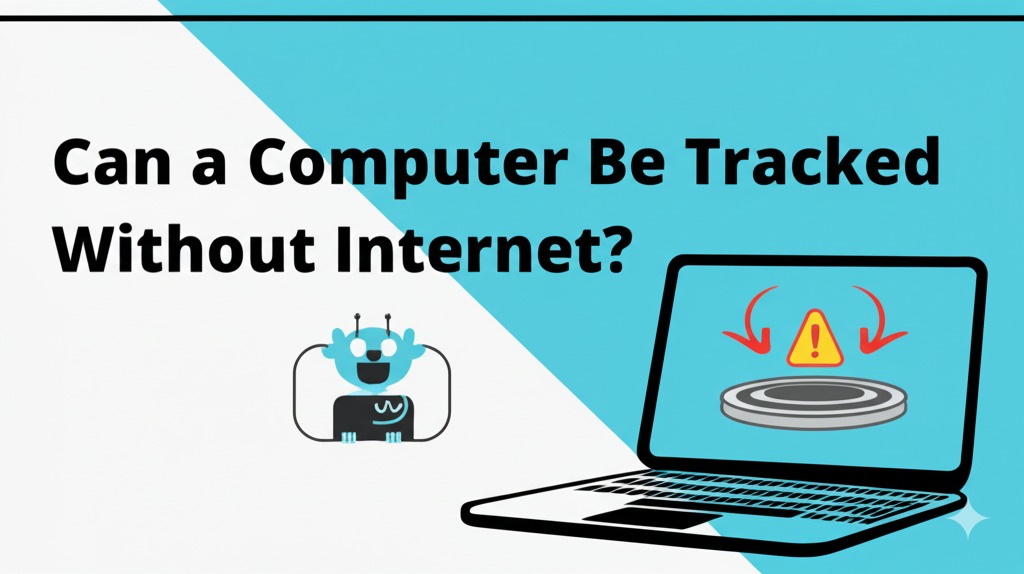In a world where privacy concerns are at an all-time high, many people are beginning to ask: can a computer be tracked without an internet connection? With the ever-growing use of digital devices, including desktops and laptops, tracking and privacy are topics of significant concern. While it’s easy to assume that the internet is the primary way to track a computer’s movements or activities, there are actually several methods through which a computer can be tracked, even without an active internet connection. This article will explore how this is possible and what measures can be taken to protect privacy.
Understanding Computer Tracking Without Internet Access
Computer tracking typically involves identifying the location and activities of a computer or its user. While most tracking methods rely on an internet connection, it’s important to understand that even offline computers can be monitored or traced in specific ways.
Let’s explore how this can happen.
1. GPS and Hardware Tracking
Even when your computer is offline, some hardware components in your device can still relay location information. Many laptops, smartphones, and tablets have built-in GPS chips that can track their location, whether or not the device is connected to the internet. These chips record the geographical location and, in some cases, store this data for later use when the device does eventually go online.
- GPS tracking: This can help in tracking a device’s location, even when no internet connection is available, as the GPS chip doesn’t need an internet connection to function.
- Hardware-based location monitoring: Some manufacturers install specific hardware tracking mechanisms for theft recovery.
However, while these tracking methods are possible, they generally require specialized software to access this location data.
2. The Role of BIOS and System Logs
A surprising way a computer can be tracked offline is through system logs and data stored in the BIOS (Basic Input/Output System). These are built into the hardware and contain detailed logs about system activity.
- System logs: These logs often record when a computer is started, what programs are run, and other relevant details about its activity. Some logging systems can be accessed remotely when the computer is connected to a network.
- BIOS: The BIOS is responsible for managing and starting up hardware before the operating system is loaded. It can also store specific data, such as hardware IDs and serial numbers, which can be traced back to the device, even without an internet connection.
While this method doesn’t track a computer in real-time, it can offer valuable information once the computer is reconnected to a network or synced with a remote server.
3. Tracking Via External Devices
Some external devices, such as USB drives, wireless peripherals, and even Bluetooth, can be used to monitor or track the activity of a computer. These devices can be equipped with software that logs specific actions or communicates with the computer in various ways.
- USB tracking devices: Some USB devices are designed to collect data from the computer they’re plugged into, including system activity or keylogging information.
- Bluetooth and wireless devices: Bluetooth can be used to establish a local network, allowing for tracking devices in proximity to the computer even when no internet connection is available.
If you’re using a wireless mouse, keyboard, or even connecting through external storage devices, it’s important to ensure these devices don’t have hidden tracking capabilities.
4. The Use of Offline Surveillance Software
There are various types of surveillance software that can be installed on a computer. These programs are designed to operate even when the device is offline. While they typically track activities such as keylogging or screen capturing, some advanced versions can also log the geographical location based on the device’s internal hardware.
These types of software are often used for parental control, employee monitoring, or by malicious actors for spying. Once the computer reconnects to the internet, the software can upload the collected data to a remote server.
- Keyloggers: Capture keystrokes and can operate without an internet connection. Once the computer is back online, all the recorded information is transmitted.
- Screen recording tools: These can take screenshots or record the screen at intervals, even when offline, and upload the images once a connection is made.
5. Tracking via Network Connections
Even without internet access, your computer may still be connected to local networks. This means it can be tracked by entities who control these networks. For example, a local area network (LAN), even without an internet connection, may allow someone to monitor all devices connected to it.
- Local network monitoring: This can track all the devices connected to the network, including computers that aren’t connected to the internet, by capturing traffic and monitoring activity on the network.
- MAC address tracking: Every networked device has a MAC address that is unique. Even without an internet connection, network administrators can trace the activity of a computer by its MAC address, as long as it is connected to a local network.
While the MAC address doesn’t transmit personal information, it can be used to identify and track the physical device on a network.
How to Protect Your Privacy
If you’re concerned about your computer being tracked offline, there are several steps you can take to minimize the risks:
1. Use Full Disk Encryption
One of the best ways to secure your data and prevent tracking is by encrypting your hard drive. Full disk encryption ensures that even if someone gains physical access to your computer, they won’t be able to read your files without the encryption key.
2. Disable GPS and Other Location Services
If your device has a GPS chip or location services enabled, you can disable these features in the settings. Many laptops allow you to turn off location tracking entirely, preventing any unwanted tracking.
3. Be Cautious With External Devices
Avoid using external devices like USB drives or Bluetooth peripherals unless absolutely necessary. These devices can often be used to track or compromise your privacy.
4. Use Firewall and Anti-Surveillance Software
Install reliable firewall and anti-surveillance software to block any unauthorized attempts to track or monitor your computer. This software will help protect against any hidden tracking software or unwanted connections.
Conclusion: Stay Vigilant About Your Privacy
While it’s certainly true that the internet is a primary way to track a computer, it’s far from the only method. Whether through GPS, system logs, external devices, or offline surveillance software, a computer can be tracked even without an internet connection. Therefore, it’s important to take proactive steps to protect your privacy, such as using encryption, disabling location services, and being cautious about the devices you connect to your computer.
In today’s digital age, privacy protection is key. Stay informed, stay vigilant, and take the necessary steps to safeguard your personal data.

Caleb Carlson is a contributing writer at Computer Site Engineering, specializing in computer technology, software trends, and hardware innovations. His articles simplify complex tech topics, making them accessible to readers of all levels.





